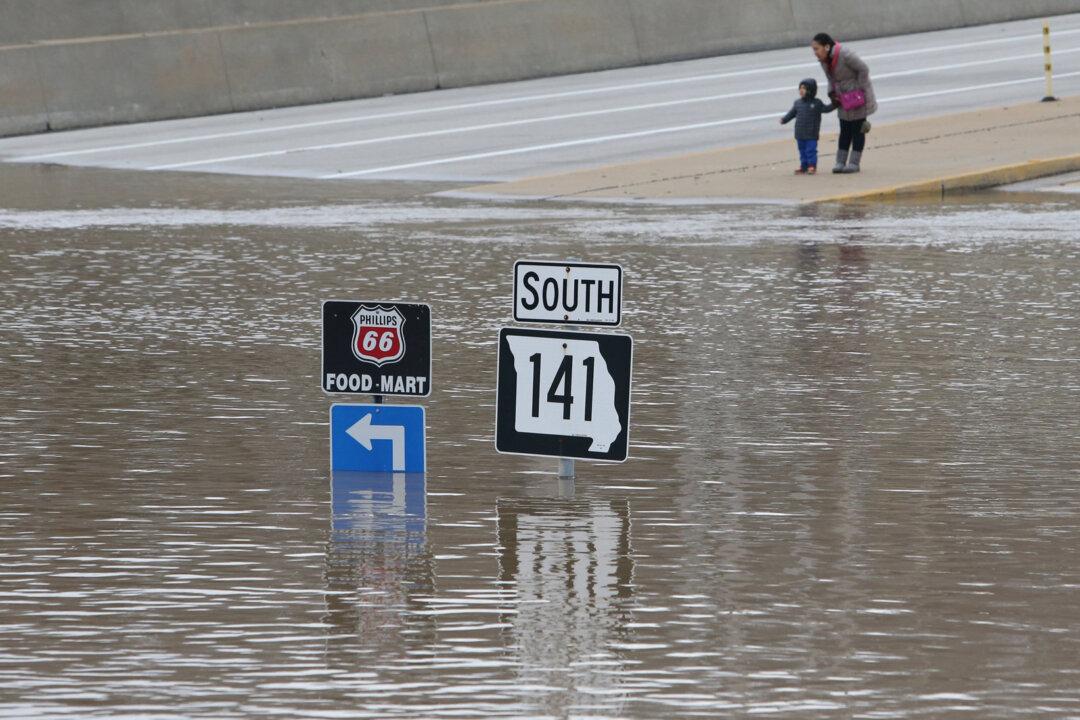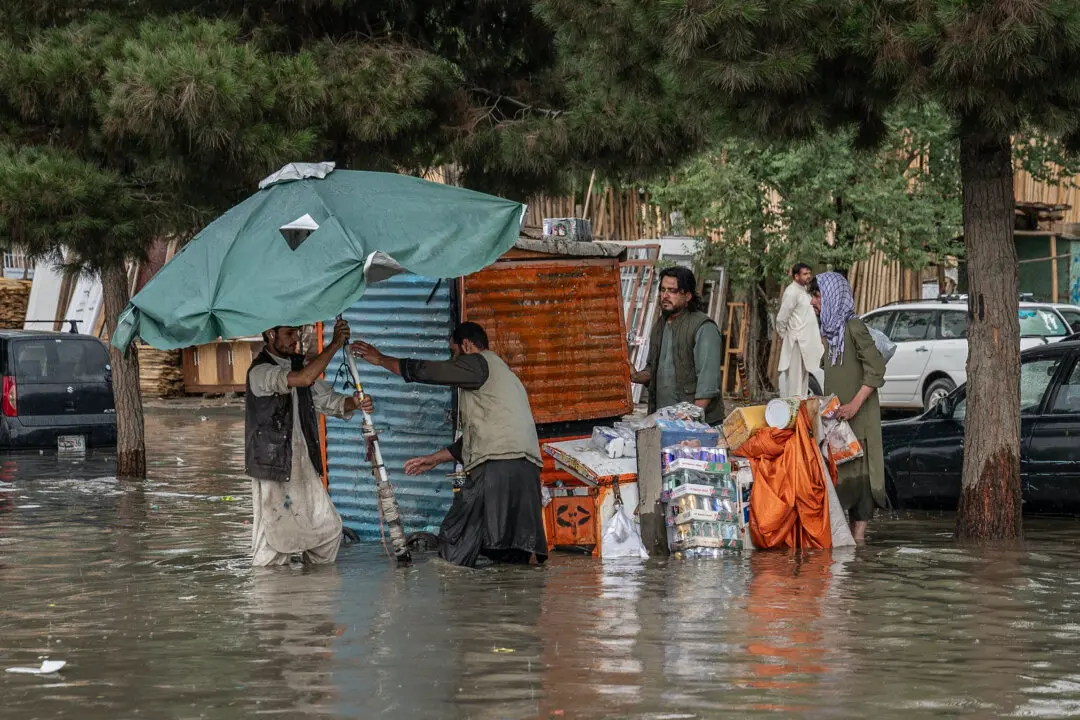ST. LOUIS—The Mississippi River floods more often than it used to, and at higher levels. Richard Knaup thinks he knows why.
The veteran emergency management director for southeast Missouri’s Cape Girardeau County is fighting floods again, just as he did last year, and the year before that, and the year before that.
“Prior to levee building, the river was a wild thing and it spread out between the river bluffs,” Knaup said Monday, Jan. 4. “Now we’ve tried to tame it. Mother Nature and Old Man River will fight back.”
The rains that caused this winter’s flood, blamed already for 25 deaths and damage to hundreds of homes and businesses, ended a week ago, but the water was still rising Monday in southern Missouri and Illinois. The Illinois River, which joins the Mississippi above St. Louis, was expected to reach near-record crests this week between the Illinois towns of Havana and Valley City, creating “a very dangerous situation” as levees there become saturated, said Steve Buan, a National Weather Service hydrologist.
Several other states along the Mississippi River were still bracing for the crest, which was flowing past Tiptonville, Tennessee, and expected to reach Memphis on Thursday at 6.5 feet above flood stage.
For many in the flood-weary Midwest, fighting the river has become an almost annual event. In Cape Girardeau County, all but 5 of the 32 highest crests on record have occurred since the record-setting 1993 flood, and 4 of the top 10 have happened since 2011.
So what’s going on? Unusual weather patterns are a symptom of global warming, but experts also blame more immediate developments, including efforts to protect growing towns and cities from the rivers both that sustain and threaten them.
Bob Holmes, a Missouri-based hydrologic engineer for the U.S. Geological Survey, says the Midwest has received far more rainfall than normal over the past quarter of a century, and more extreme rainstorms, such as the three-day downpour Dec. 26–28 that dumped 10 inches of rain over much of Missouri and Illinois and caused this latest mess. But urban sprawl also increases flood risk, he said.
“Farm fields will soak up water,” Holmes said. “If you pave it with concrete or asphalt, all of a sudden that is a very efficient conduit right into the streams and you get increased flooding.”





